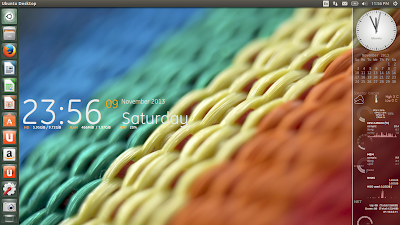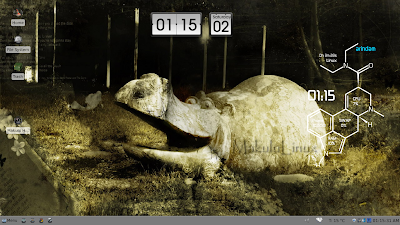I have been following OpenMandriva for quite sometime, occasionally testing their release candidate distros as well. For those who are not aware of the latest Mandriva spin on the block, OpenMandriva distribution is a full-featured Linux desktop and server, sponsored by the OpenMandriva Association. It is based on ROSA, a Russian Mandriva fork, and hence, the look and feel of OpenMandriva is too similar to ROSA. With Mandriva dead, OpenMandriva joins three of my favorite distros, PCLinuxOS, Mageia and ROSA, as the surviving Mandriva spins. The formal release of OpenMandriva came out on 22 Nov 2013 and like any other Linux enthusiast, I seriously wanted to give it a try.
I download the 1.6 GB 64-bit ISO for this review. I created a live USB using Linux Mint ImageWriter (works with more distros than Unetbootin), did a live boot and installed it on my favorite two machines:
I wanted to check the performance of the distro in both hybrid and single graphic card environment. Hence, the dual machine. Further, I installed it in virtualbox to record the installation process.
OpenMandriva is forked from Mandriva and ships with KDE 4.11.2, Linux kernel 3.11.8 and Dolphin 4.11.2 as file manager. Like ROSA, OpenMandriva too ships with the most modern but stable Linux software. Next I take you through step by step my experience of using OpenMandriva for a week.
 |
| From OpenMandriva Lx 2013.0 http://mylinuxexplore.blogspot.in |
- Asus K55VM laptop with 2.3 Ghz Core i7 3610QM processor, 8 GB DDR3 RAM and 2 GB NVIDIA GeForce GT 630M graphics
- Asus K54C laptop 2.2 Ghz Core i3 processor, 2 GB DDR3 RAM and Intel HD 3000 graphics
I wanted to check the performance of the distro in both hybrid and single graphic card environment. Hence, the dual machine. Further, I installed it in virtualbox to record the installation process.
OpenMandriva is forked from Mandriva and ships with KDE 4.11.2, Linux kernel 3.11.8 and Dolphin 4.11.2 as file manager. Like ROSA, OpenMandriva too ships with the most modern but stable Linux software. Next I take you through step by step my experience of using OpenMandriva for a week.
Read more!




